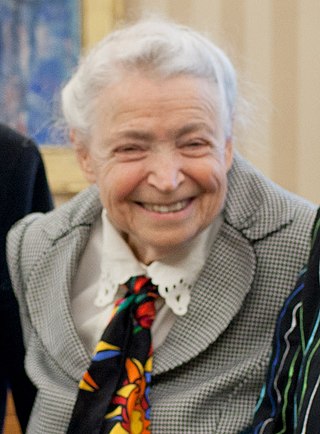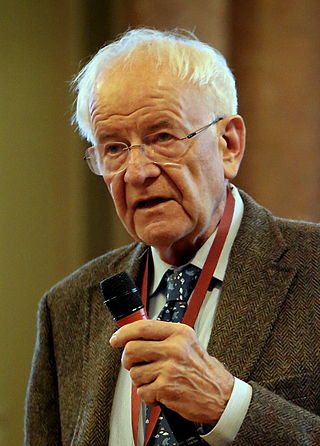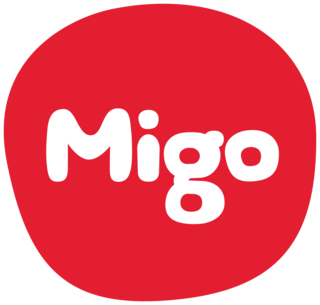Related Research Articles

Electronic paper or intelligent paper, is a display device that reflects ambient light, mimicking the appearance of ordinary ink on paper – unlike conventional flat-panel displays which need additional energy to emit their own light. This may make them more comfortable to read, and provide a wider viewing angle than most light-emitting displays. The contrast ratio in electronic displays available as of 2008 approaches newspaper, and newly developed displays are slightly better. An ideal e-paper display can be read in direct sunlight without the image appearing to fade.

Peter Williston Shor is an American theoretical computer scientist known for his work on quantum computation, in particular for devising Shor's algorithm, a quantum algorithm for factoring exponentially faster than the best currently-known algorithm running on a classical computer. He has been a professor of applied mathematics at the Massachusetts Institute of Technology (MIT) since 2003.

Charles Stark "Doc" Draper was an American scientist and engineer, known as the "father of inertial navigation". He was the founder and director of the Massachusetts Institute of Technology's Instrumentation Laboratory, which was later spun out of MIT to become the non-profit Charles Stark Draper Laboratory.

Mildred Dresselhaus, known as the "Queen of Carbon Science", was an American physicist, materials scientist, and nanotechnologist. She was an institute professor and professor of both physics and electrical engineering at the Massachusetts Institute of Technology. She also served as the president of the American Physical Society, the chair of the American Association for the Advancement of Science, as well as the director of science in the US Department of Energy under the Bill Clinton Government. Dresselhaus won numerous awards including the Presidential Medal of Freedom, the National Medal of Science, the Enrico Fermi Award, the Kavli Prize and the Vannevar Bush Award.
Rahul Sarpeshkar is the Thomas E. Kurtz Professor and a professor of engineering, professor of physics, professor of microbiology & immunology, and professor of molecular and systems biology at Dartmouth. Sarpeshkar, whose interdisciplinary work is in bioengineering, electrical engineering, quantum physics, and biophysics, is the inaugural chair of the William H. Neukom cluster of computational science, which focuses on analog, quantum, and biological computation. The clusters, designed by faculty from across the institution to address major global challenges, are part of President Philip Hanlon's vision for strengthening academic excellence at Dartmouth. Prior to Dartmouth, Sarpeshkar was a tenured professor at the Massachusetts Institute of Technology and led the Analog Circuits and Biological Systems Group. He is now also a visiting scientist at MIT's Research Laboratory of Electronics.

E Ink is a brand of electronic paper (e-paper) display technology commercialized by the E Ink Corporation, which was co-founded in 1997 by MIT undergraduates JD Albert and Barrett Comiskey, MIT Media Lab professor Joseph Jacobson, Jerome Rubin and Russ Wilcox.

Henry Frederick "Fritz" Schaefer III is an American computational, physical, and theoretical chemist.

Roman Wladimir Jackiw was a Polish-born American theoretical physicist and Dirac Medallist.

Science and technology in Germany has a long and illustrious history, and research and development efforts form an integral part of the country's economy. Germany has been the home of some of the most prominent researchers in various scientific disciplines, notably physics, mathematics, chemistry and engineering. Before World War II, Germany had produced more Nobel laureates in scientific fields than any other nation, and was the preeminent country in the natural sciences. Germany is currently the nation with the 3rd most Nobel Prize winners, 115.
Robert Loren Jaffe is an American physicist and the Jane and Otto Morningstar Professor of Physics at the Massachusetts Institute of Technology (MIT). He was formerly director of the MIT Center for Theoretical Physics.
Daniel Zissel Freedman is an American theoretical physicist. He is an Emeritus Professor of Physics and Applied Mathematics at the Massachusetts Institute of Technology (MIT), and is currently a visiting professor at Stanford University. He is mainly known for his work in supergravity. He is a member of the U. S. National Academy of Sciences.

James Daniel "BJ" Bjorken was an American theoretical physicist. He was a Putnam Fellow in 1954, received a BS in physics from MIT in 1956, and obtained his PhD from Stanford University in 1959. Bjorken was a visiting scholar at the Institute for Advanced Study in the fall of 1962. He was also emeritus professor in the SLAC Theory Group at the Stanford Linear Accelerator Center, and was a member of the Theory Department of the Fermi National Accelerator Laboratory (1979–1989).
Adam Ezra Cohen is a Professor of Chemistry, Chemical Biology, and Physics at Harvard University. He has received the Presidential Early Career Award for Scientists and Engineers and been selected by MIT Technology Review to the TR35 list of the world's top innovators under 35.

Nergis Mavalvala is a Pakistani-American astrophysicist. She is the Curtis and Kathleen Marble Professor of Astrophysics at the Massachusetts Institute of Technology (MIT), where she is also the dean of the university's school of science. She was previously the Associate Head of the university's Department of Physics. Mavalvala is best known for her work on the detection of gravitational waves in the Laser Interferometer Gravitational-Wave Observatory (LIGO) project, and for the exploration and experimental demonstration of macroscopic quantum effects such as squeezing in optomechanics. She was awarded a MacArthur Fellowship in 2010.
Barrett Comiskey is an American innovator. He is recognized by the World Economic Forum as a Technology Pioneer and was the youngest inductee into the National Inventors Hall of Fame, for inventing and co-founding E Ink while an undergraduate at the Massachusetts Institute of Technology. He is currently the Founder of Migo.
JD Albert is an American engineer, inventor, and educator. Albert is one of the inventors of microencapsulated electrophoretic display commonly used in electronic devices such as e-readers.

Migo is a technology company that "provides affordable data services for emerging markets". Its content delivery network distributes digital products and services to mass market consumers at the local corner store through Migo Download Stations (MDS).
Jelena Vučković is a Serbian-born American professor and a courtesy faculty member in the Department of Applied Physics at Stanford University. She served as Fortinet Founders Chair of the Department of Electrical Engineering at Stanford University from August 2021 through June 2023. Vučković leads the Nanoscale and Quantum Photonics (NQP) Lab, and is a faculty member of the Ginzton Lab, PULSE Institute, SIMES Institute, and Bio-X at Stanford. She was the inaugural director of the Q-FARM initiative. She is a Member of the National Academy of Sciences, and a Fellow of The Optical Society, the American Physical Society and the Institute of Electrical and Electronics Engineers.
Paola Cappellaro is an Italian-American engineer who is a Professor of Nuclear Science and Engineering at the Massachusetts Institute of Technology. Her research considers electron-spin resonance, nuclear magnetic resonance and quantum information processing. She also leads the MIT Quantum Engineering Group at the Center for Ultracold Atoms.
Daniel Harlow is the Jerrold R. Zacharias Career Development Associate Professor of Physics at the Massachusetts Institute of Technology.
References
- ↑ Jacobson, Joseph (18 May 1998). "An electrophoretic ink for all-printed reflective electronic displays". Nature. 394 (6690): 253–255. Bibcode:1998Natur.394..253C. doi:10.1038/28349. S2CID 204998708.
- ↑ Tu, Chau. "How Electronic Ink Was Invented". sciencefriday.com. Retrieved 14 March 2017.
- ↑ Charles Platt (May 1997). "Digital Ink". Wired Magazine. Retrieved 13 June 2012.
- ↑ Klein, Alec (4 January 2000). "A New Printing Technology Sets Off a High-Stakes Race". wsj.com. Retrieved 14 March 2017.
- ↑ "Innovators under 35". MIT Technology Review. 1999. Archived from the original on March 15, 2016. Retrieved January 26, 2013.
- ↑ Booker, Richard; Boysen, Earl (25 July 2005). Nanotechnology for dummies. For Dummies. p. 135. ISBN 978-0-7645-8368-1 . Retrieved 2 September 2010.
- ↑ Joseph M Jacobson, retrieved on 20 March 2020 in Wilhelmexner.org
- ↑ Primozec, Ursa (27 May 2016). "Interview with Barrett Comiskey, father of electronic ink". visionect.com. Retrieved 14 March 2017.